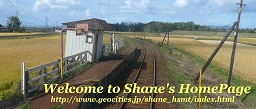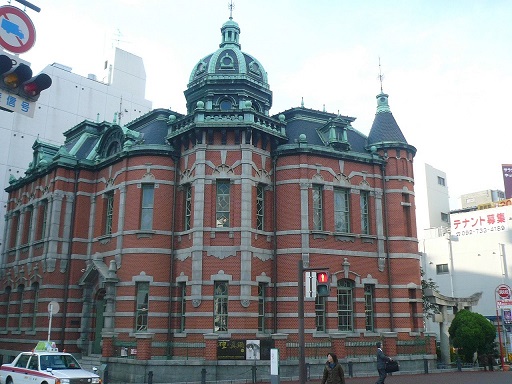|
Kushida Shrine and Nakasu in Fukuoka
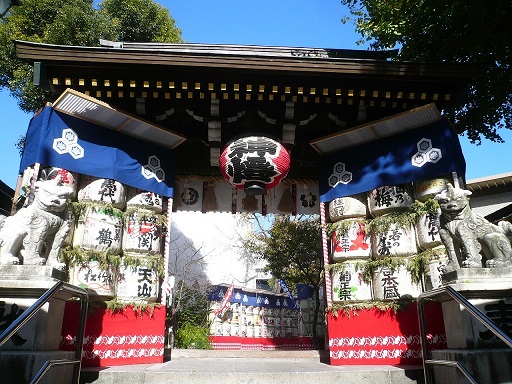

|
|
Fukuoka is the Prefectural Capital of Fukuoka and has the largest population in Kyushu Island. Fukuoka has two main areas, one is "Fukuoka" and the other is "Hakata". "Fukuoka" developed after KURODA Nagamasa (1568-1623) built Fukuoka Caste in 1606 and became the area where "Samurai" Residences were located during the Edo Age (1603-1868) . "Hakata" has been developed since the middle of the third century and well-known as a base port for trading with China and Korean countries.Please refer the page of Fukuoka Castle for more detail: http://handejapan19.html.xdomain.jp/TravelDestinations/Kyushu/FukuokaCastle_E.html The Nakagawa River flows along the border between the "Hakata" and "Fukuoka" Areas. The small island in the Nakagawa River, is named "Nakasu". Kushida Shrine is located to "Gion" in the "Hakata" Area, next to the "Nakasu" Area. This page introduces you Kushida Shrine and the Nakasu Area. Kushida Shrine in FukuokaKushida Shrine is located in the "Gion" Area, Fukuoka City, near to Nakasu. It is said that the shrine was originally built in 757. The current existing shrine buildings were rebuilt by TOYOTOMI Hideyoshi (1537-1598) in 1597.You will see the Torii Gate and the two-storied Gate in front of Kushida Shrine. 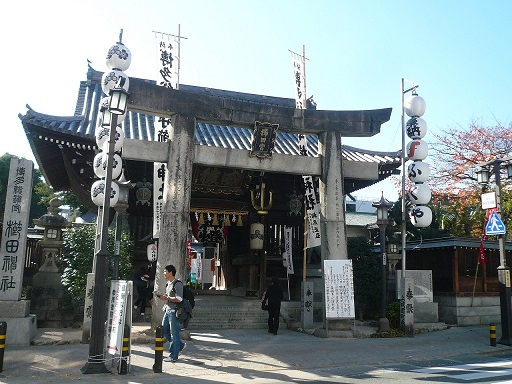
The two-storied Gate is very impressive. 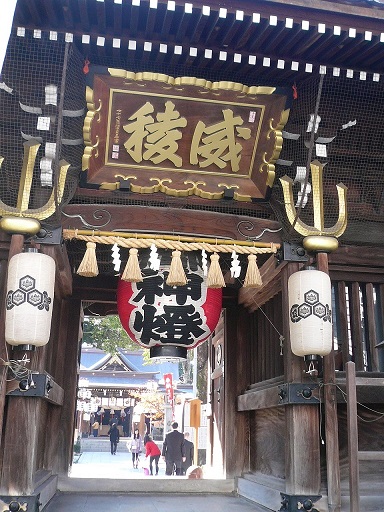
After passing through the two-storied gate, you will see a corridor and will go through the middle gate. The middle gate is very well decorated and is also very impressive. |
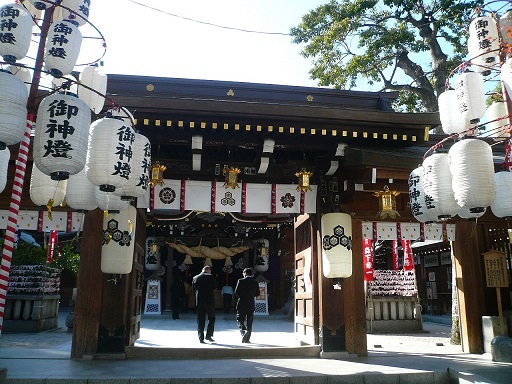
|
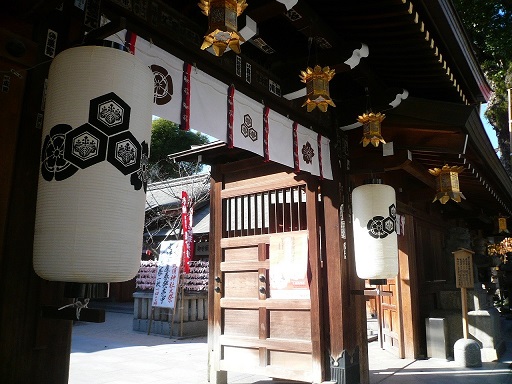
|
|
You will be in front of the main shrine building, just after passing through the middle gate. The main shrine building is very gorgeous. When I visited, many people came to pray to Gods. 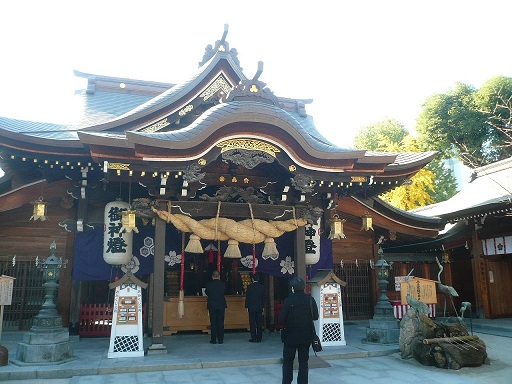
If you walk to the south, you will see the South Gate as shown in the below picture. You will see a lot of barrels of Japanese Sake. These were donated to the shrine and an evidence how much the shrine is popular. 
Kushida Shrine is also well-known as the "Hakata Gion Yamagasa" Festival. The "Hakata Gion Yamagasa" Festival started in 1241 to pray for protection from plague. The festival is held from July 1 to July 15, every year. In total three million people attend the festival. It is the most popular festival in Japan. The festival is designated as an important intangible cultural property of Japan and is listed to UNESCO Intangible Cultural Heritage List. |
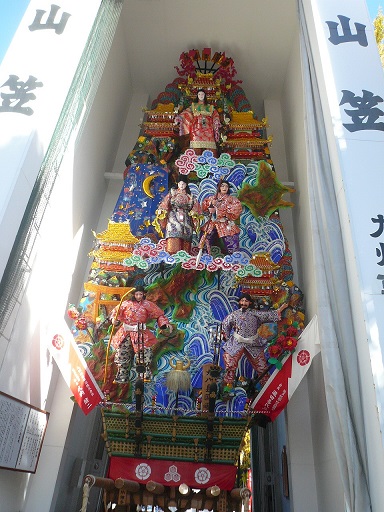
|

|
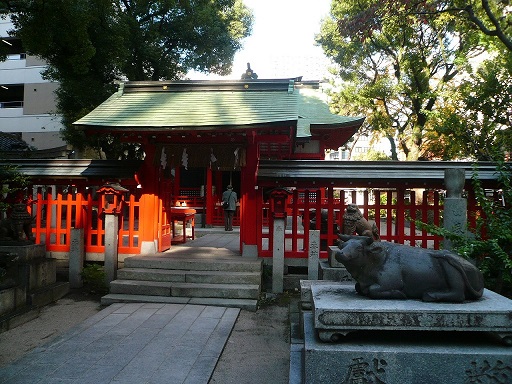
|
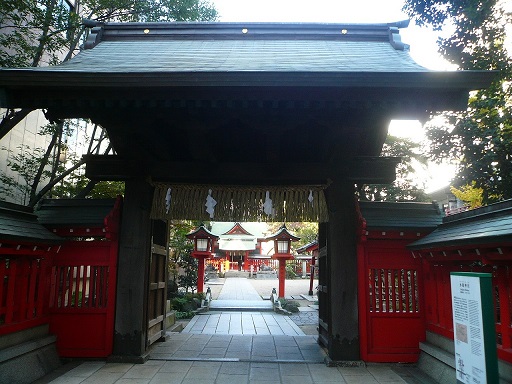
|
|
In 901, SUGAWARA-no Michizane (845-903) was on his way to Dazaifu after he was demoted from a Udaijin, one of two top positions of the Dynasty in Japan from the Nara Age (710-794) to the Heian Age (794-1185) to the position of Dazaifu Government Office. He stopped at this area and watched his face, reflected on the surface of a river. He deplored his thin and worn-out face.With this story, people built "Suikyo Tenmangu" Shrine to enshrine SUGAWARA-no Michizane. Please refer the page of Dazaifu Tenmangu Shrine and the ruins of Dazaifu Government for more detail: Dazaifu Tenmangu Shrine: http://handejapan19.html.xdomain.jp/TravelDestinations/Kyushu/DazaifuTenmangu_E.html
The ruins of Dazaifu Government: If you walk to the east from Suikyu Tenmangu Shrine, you will see the former Public Assembly Hall of Fukuoka Prefecture. 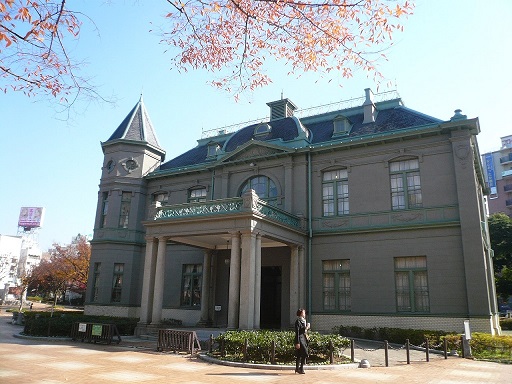
This building was also built in 1909 and is designated as an important property of Japan. If you walk to the east from the former Public Assembly Hall of Fukuoka Prefecture, you will go across the Nakagawa River over the "Fukuhaku-Deai" Bridge. The buildings in the Nakasu Area glittered in the sun. |
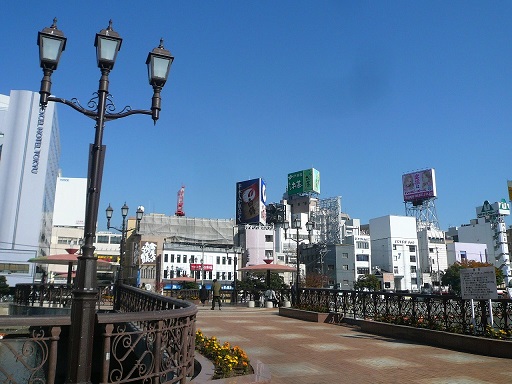
|
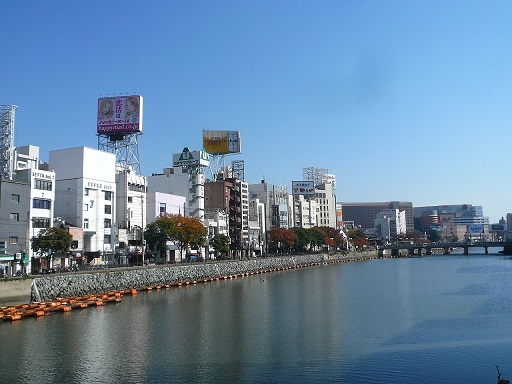
|
|
At the south end of the Nakasu Area, the tall stone lantern is located. The lantern was built in 1899 by YAHIRO Ribei, as an advertisement tower when he built an amusement park. 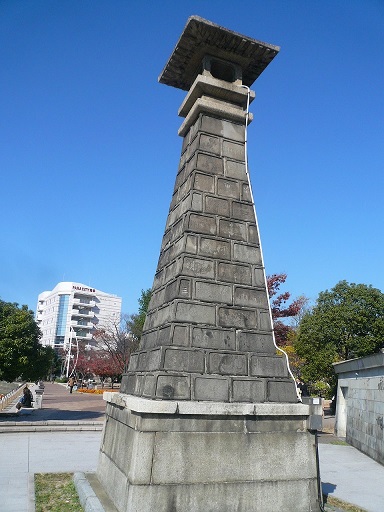
The Nakasu Area is very crowded at night. But during the daytime, you will see a couple of historical buildings and will also visit historical shrines. To the east of Nakasu, there are a couple of historical temples in the Hakata Area. |
|
How to get there
Other Historical Sites near by:
|
http://handejapan19.html.xdomain.jp/index.html
 Home Page in Japanese: "Shane's HomePage"
Home Page in Japanese: "Shane's HomePage"http://shanehsmt.html.xdomain.jp/index.html
